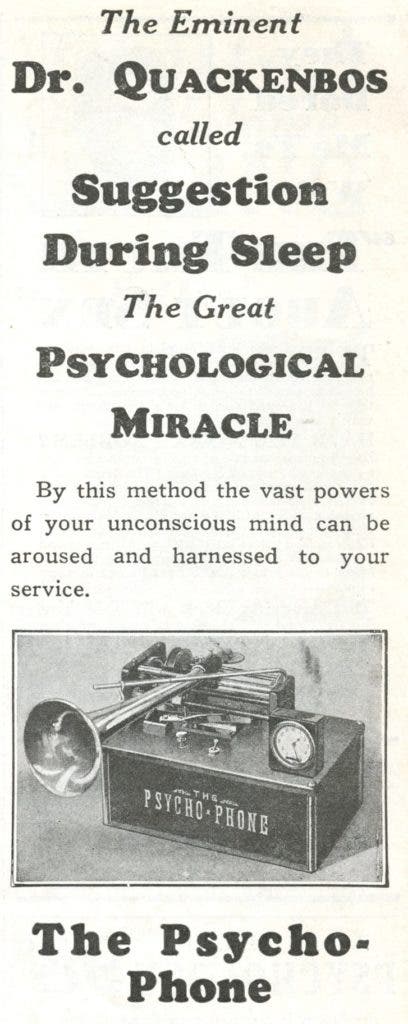In the 1920s, an eccentric inventor by the name of A. B. Saliger made a fortune selling a pseudo-science device called Psycho-phone. The machine was a peculiar phonograph which Saliger patented as an “Automatic Time-Controlled Suggestion Machine.” As the name implies, the device played the contents from a wax cylinder during the period of sleep so messages would enter a person’s unconscious and have a powerful influence on the individual’s behavior. Saliger sold thousands of such devices to eager people who were promised they could read novels or learn French, all in their sleep. Alas, such claims have long been debunked ever since the 1950s. “Learning during actual sleep did not seem possible nor learning during the deep drowsy state very practical,” researchers wrote at the time. The psycho-phone still ‘lives’ to this day in some fringe circles of people who are convinced they can communicate telepathically with the dead or among satirists. A personal favorite is the ‘Omelette du Fromage’ episode from Dexter’s Laboratory.

While the Psycho-phone is established pseudoscience, a new study suggests it’s possible to form new memories in sleep. You can’t form memories of conjugate French verbs, though. Rather, the team at the PSL Research University in Paris found sleepers could remember abstract yet patterned sounds.
The scientists recruited 20 people and played them white noise while they slept. White noise is essentially a band of random frequencies which peak unpredictably. At some point, however, the noise was patterned in sequences of a single clip of white noise, 200 milliseconds long, repeated five times.
Once they woke up, the researchers played back the white noise to the participants and asked them to identify the patterns, which is harder than it sounds. According to the findings published in Nature Communications, the volunteers had a significantly higher repetition detection rate than the control group, indicating perceptual learning.
After analyzing electroencephalogram (EEG) responses collected while participants performed the behavioral task and also while they were asleep, the scientists observed “neurophysiological markers of perceptual learning consistent with behavioral findings and previous studies.”
“The sleeping brain is including a lot of information that is happening outside,” lead author Thomas Andrillon told The Washington Post, “and processing it to quite an impressive degree of complexity.”

The memories of the patterned white noise only formed during certain sleep stages, namely during REM and light sleep. Participants could recall the patterns the next morning when these were played during non-REM sleep. As such, the findings support a previous view that suggests different sleep stages have different impacts on memory. Moreover, the paper adds weight to the idea that the sleeping brain both consolidates memories formed during waking life but also weeds out older, weaker memories.
Again, it’s important to note that these memories are abstract and essentially meaningless, but memories nonetheless. Whether or not this feature might one day lead to real brain-hacks apps or devices is uncertain at this point, though the researchers haven’t ruled out the possibility. They caution, however, that sleep — a state which is still rather nebulous despite decades of research — is very sensitive and such ‘hacks’ might disrupt it with unintended consequences. Having a vocabulary solely consisting of ‘omelette du fromage’ might be one of them.


